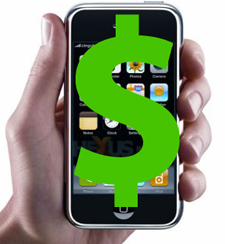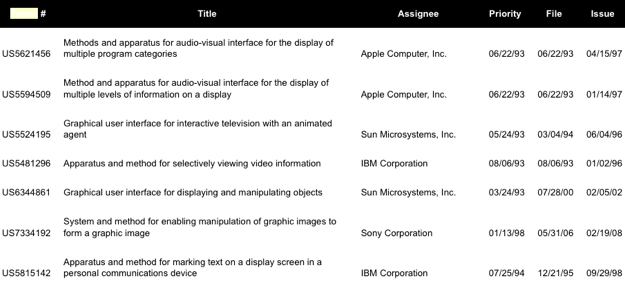
When a company called EMG Technology filed a patent lawsuit against Apple last week over “the way the iPhone navigates the Internet,” it had the stench of a patent troll. The suit was filed, a month after the patent was issued, in the Eastern District of Texas, known as troll country among patent attorneys because the courts there tend to rule favorably for patent owners.
EMG Technology is based in Los Angeles, and appears to have been formed solely for the purpose of filing this lawsuit. One of the inventors named on the patent and EMG “managing member” Elliot Gottfurcht is a Los Angeles real estate developer. Apple, of course, is also based in California.
Then there are the actual claims of patent No. 7,441,196. With the help of M-CAM, an underwriter of patent insurance, I uncovered some patents (listed below) that pre-date EMG’s and that might be considered prior art. Apple’s lawyers should take a look at them. Some of them are even owned by Apple. Others are owned by IBM, Microsoft, Sony, and Sun Microsystems.
Before we get to those, what about EMG’s patent? The claims in that patent describe the ability to manipulate, zoom, scroll, and view Web content on devices other than a laptop. But the central and primary claim has to do with a way to convert HTML Web pages into XML data that can then be displayed partially on different devices, including mobile phones.
I’m no lawyer or patent expert, but my initial reaction was that these seem like overly broad claims (they cover everything from TVs to Web appliances to cell phones) with lots of precedents. It is very difficult to display an entire Webpage on a small screen, so engineers have figured out various ways to display parts of those pages.
EMG does not specify in its suit which of the patent’s 76 claims it thinks Apple is infringing on. But in the press release announcing the lawsuit, EMG’s lawyer highlights the claims covering “the display of Internet content reformatted from HTML to XML on mobile devices” and “technology for manipulating a region of the screen for zooming and scrolling.”
I asked M-CAM to run EMG’s patent through its Patently Obvious database, which compares claims across millions of patents. And they came up with 250 instances of possible prior art not mentioned in the EMG patent. When an inventor files a patent, he is required to list all other patents you are aware of that could have an impact on your claims. One way to get a patent application past an overworked patent examiner is to list a ton of related prior art, but omit the critical ones that could invalidate the patent.
One key patent omitted by EMG is No 6,535,896: “Systems, methods and computer program products for tailoring web page content in hypertext markup language format for display within pervasive computing devices using extensible markup language tools.” It is owned by IBM and was filed on January 29, 1999, which is prior to the November 15, 1999 date that is applicable for the EMG patent. The abstract for the IBM patent describes what it does this way:
Content portions of a requested Web page are converted to an XML format and then modified using an XML content-tailoring tool. Other content portions of the Web page are masked so as to be “hidden” and are, thus, not converted to XML format. The masked portions of the Web page are then unmasked, combined with the modified content portions, and transmitted to a client device for display therewithin.
That sounds very similar to parts of the first claim of the EMG patent:
1. A method of navigating the Internet, comprising: displaying on-line content accessed via the Internet, the on-line content reformatted from a webpage in a hypertext markup language (HTML) format into an extensible markup language (XML) format to generate a sister site, . . . navigation options to change between layers of the simplified navigation interface from general to more specific in each deeper layer; receiving a user selection of one of the navigation options; forwarding the selected navigation option across the internet to a server providing the simplified navigation interface; receiving a next deeper navigation layer of the simplified navigation interface corresponding to the selected navigation option
You don’t see IBM suing Apple for patent infringement (even though it is suing Apple for stealing away one of its key employees). It kind of makes you wonder how EMG’s patent get approved by the U.S. Patent Office in the first place.
But this lawsuit just illustrates a bigger problem with the patent system. Since the budget of the Patent Office, which is derived from filing and maintenance fees, is tied directly to how many patents it approves, it has an economic incentive to approve as many as possible. This system needs to be changed. (Anyone on Obama’s team reading this?).
Below is some other prior art (patents 6249844, 6339780, 5815142, 5481296, 5621456, 5594509, 5524195, 6344861, and 7334192) that Apple’s lawyers might want to take a look at.

